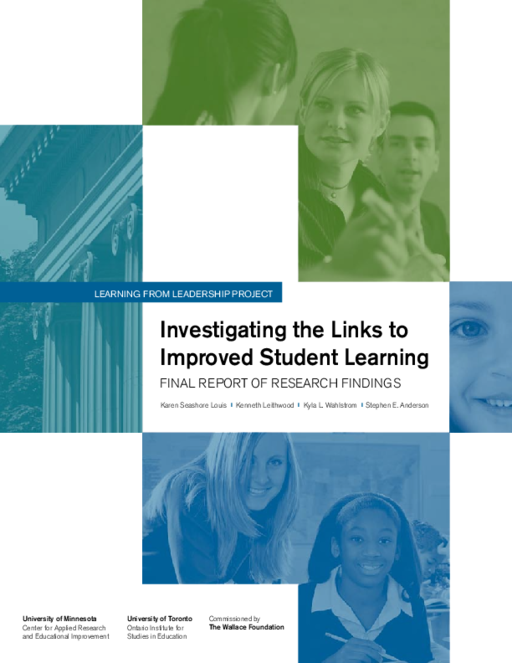Research Approach
Begun around 2005, this five-year study was among the largest of its kind at the time. It involved nine states, 43 school districts, and 180 public schools. The researchers fielded two rounds of surveys with principals and teachers. That led to survey data from almost 8,400 teachers and 475 school administrators. They also observed classrooms and interviewed a range of state policymakers, education leaders, and teachers. These included state legislators, school district officials, school board members, teachers, administrators. The research also involved examination of student test scores in reading and math.
The study's particularly noteworthy features, as against other educational leadership studies, include the size of the data base, the use of multiple theoretical and methodological approaches to the research, and the comprehensive sources of leadership examined.
Size of the data base. The researchers collected data from a wide range of respondents in nine states, 43 school districts, and 180 elementary, middle, and secondary schools. At the state level, they conducted interviews with legislators, stakeholders, and members of state education agencies. In districts, they interviewed senior district leaders, elected board members, representatives of the media, and other informants. They used survey instruments and interviews with teachers and administrators, and they conducted classroom observations with most of the teachers interviewed. They collected survey data in the first and fourth years of the study; they conducted interviews in districts and schools in three cycles over the five years of the project. These efforts yielded, by the end of the project, survey data from a total of 8,391 teachers and 471 school administrators; interview data from 581 teachers and administrators, 304 district level informants, and 124 state personnel; and observational data from 312 classrooms. Finally, they obtained student achievement data for literacy and mathematics in elementary and secondary grades, using scores on the states' tests for measuring Adequate Yearly Progress as mandated by the No Child Left Behind Act of 2002.
Multiple methodological approaches. The researchers used qualitative and quantitative methods to gain certain advantages associated with multiple-methods research. The advantages typically include "rich opportunities for cross-validating and crossfertilizing… procedures, findings, and theories" (Brewer & Hunter, 1989, p. 13). Their particular use of multiple methods offered opportunities that they had not fully appreciated in the early stages of their work. These included opportunities to discover significant patterns and relationships in their quantitative evidence, which they were then able to pursue in greater depth, thanks to their qualitative evidence. From the analysis of their first-round survey data they found that one of the most powerful sources of districts‘ influence on schools and students was through the development of school leaders‘ collective sense of efficacy about their jobs. With this connection well established quantitatively, they mined principal-interview data to learn in greater detail what districts actually did to develop a sense of efficacy among principals.

